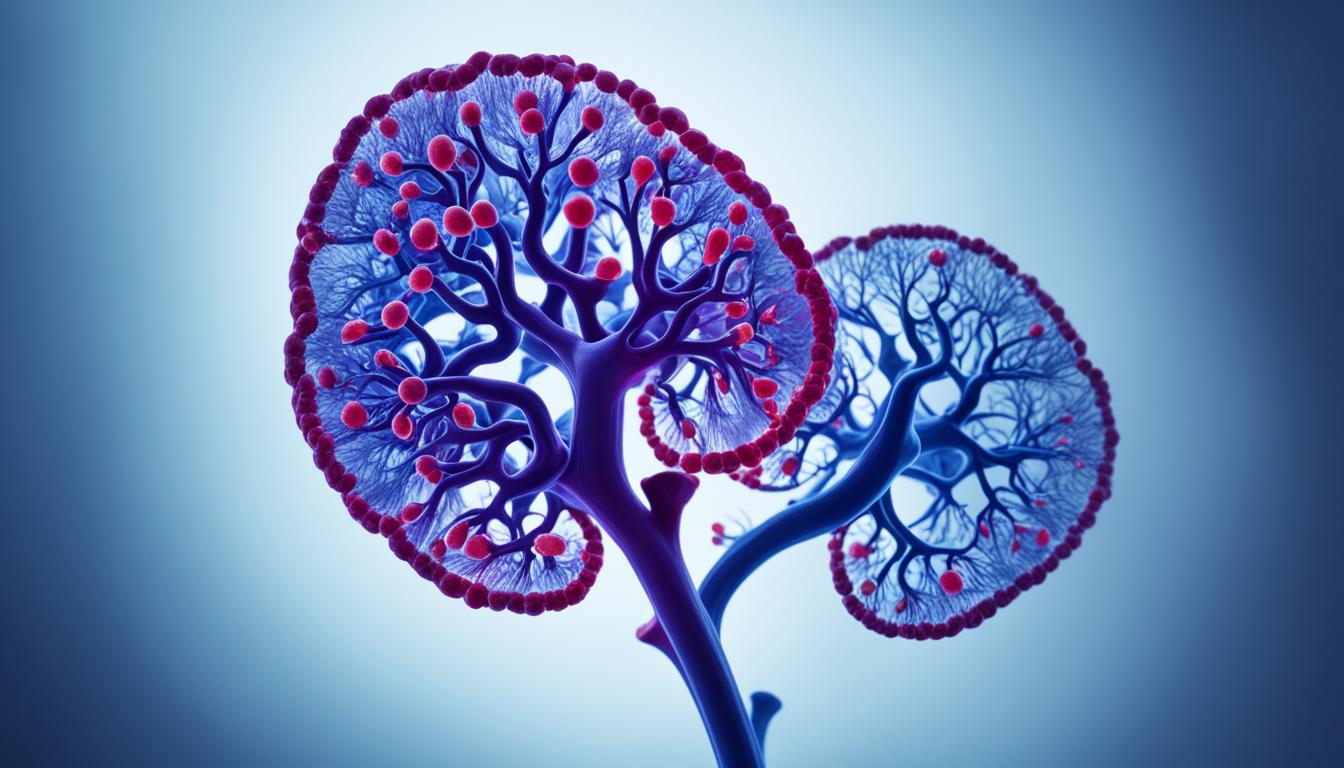Renal cancer starts from the kidneys. It’s also known as RCC. Symptoms may include lumps in the abdomen, blood in the urine, and back pain. Rapid weight loss, fever, and being very tired are also signs.
Diagnosing kidney cancer is about finding unusual cell growth. These cells make up a tumor in the kidney. If not caught early, kidney cancer can spread to the liver, lungs, or brain.
Kidney cancer is the ninth most common cancer in men and the fourteenth in women. Cases are on the rise, especially in younger people and in Europe. Age, gender, and ethnic background play a role. For example, those aged 65 – 74 see the highest rates, men get it more often, and certain ethnicities have an increased risk.
There are different types, with RCC being the most common. It makes up 85% of all kidney cancers. This type can appear as a single tumor or spread to other organs. There are also transitional cell carcinomas and renal sarcomas, which are more rare.
Treating renal cancer depends on its type and stage. Sutgery, targeted therapy, and stem cell therapy are among the options.
Key Takeaways:
- Renal cancer starts from the kidneys, known as RCC.
- Signs include lumps, blood in the urine, back pain.
- It can spread to the liver, lungs, or brain.
- Risk factors include age, gender, and ethnicity.
- Treatment options vary based on cancer type and stage.
Global Kidney Cancer Statistics and Risk Factors
Kidney cancer is a big concern for health worldwide. In 2021, it ranked ninth for men and fourteenth for women in the number of new cases. The people getting diagnosed with renal cell adenocarcinoma has almost tripled since the 1980s. This cancer is becoming more common in young people and in Europe.
There are things we can change to lower our risk of kidney cancer. These include not smoking, keeping a healthy weight, managing high blood pressure, and avoiding certain environments. These risks can be different for each person. Knowing about them helps us make choices to stay healthy.
Kidney cancer happens more in those aged 65 to 74, especially men. Their risk is twice as high as that for women. Also, Native Americans and those of African descent are more likely to get kidney cancer. While it’s uncommon in kids, some, especially aged 3 to 5, might get a type called Wilms tumor.
Types of Kidney Cancer and Diagnostic Tests
Kidney cancer comes in different forms. The main type is called renal cell carcinoma (RCC), making up 85% of cases. Adults usually get clear cell renal cell carcinoma. But, kidney cancer in kids might be transitional cell carcinomas, renal sarcoma, or Wilms tumors.
Diagnosing kidney cancer starts with a detailed look at the patient’s history and a physical exam. Then, doctors use special tests to check for the disease and see how far it has spread. They test the urine for blood and look at kidney function from blood tests.
They also use imaging scans, like CT or MRI, to look inside the body. These show if there are any unusual growths. Techniques such as cystoscopy and ultrasound are helpful in spotting kidney cancer too.
By gathering this test data, doctors can figure out how advanced the cancer is. They look at the tumor size and if it has spread. This information helps create a treatment plan specific to each patient.

